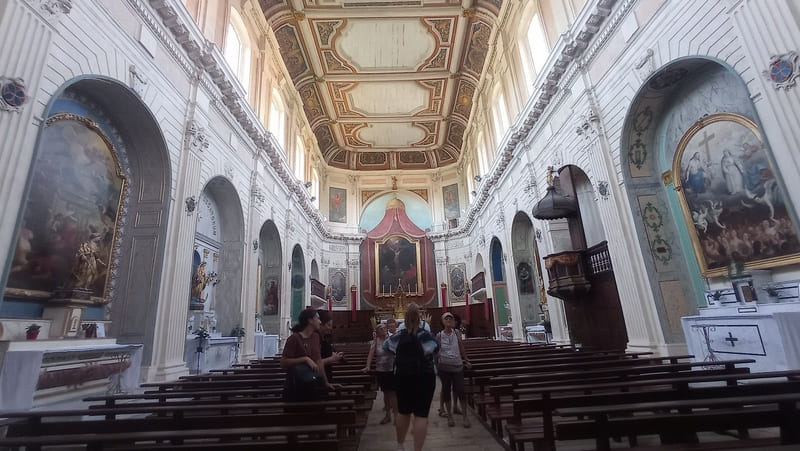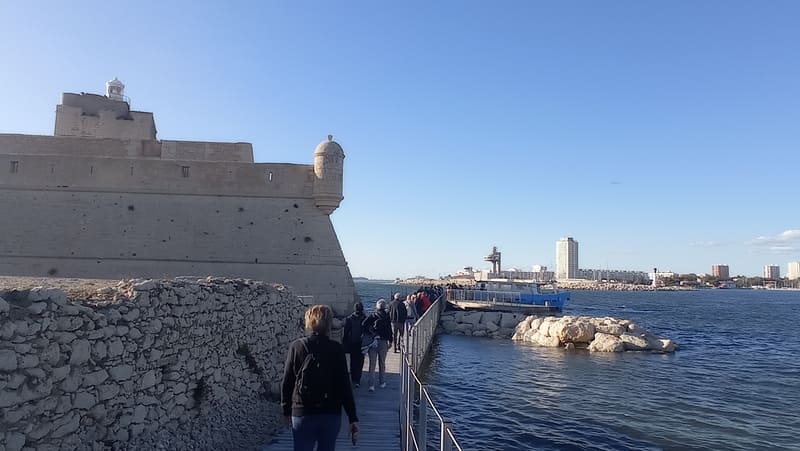Martigues: Ville d’Art et Histoire
Get a bird’s eye view of the historical heritage of Martigues, a city recognised for its art and history.
Discover the magnificent 360° panorama from Chapelle Notre Dame des Marins over the city surrounded by water, canals and bridges. The city has three districts: Ile, Jonquières and Ferrières.The three neighbourhoods, each with their own church, were rivals for many years. Their flag marks their union on 21 April 1581 when Martigues was founded.
Chapelle de l’Annonciade
Listed as a historical monument in 1910, the 17th- century Chapelle de l'Annonciade des Pénitents Blancs benefited from a restoration programme which was completed in 2015. The rich interior decoration with baroque influences, rare in the Basse-Provence area, features trompe l'oeils, sculptured panelling, a guilt altarpiece, a Venetian-style painted ceiling and graffiti dating back to the French Revolution.The Galerie de l’histoire de Martigues
The Galerie de l’histoire de Martigues retraces the memory of this thousand-year old city and its residents in over 500 m² of exhibition space. With videos, written documents, photographs, models and museography, the gallery highlights key periods in the evolution of Martigues. The exhibition goes from the first traces of human civilisation to the rapid development during the second half of the 20th century, and envisages the city of the future.Fort de Bouc
Standing high on pink limestone walls at the mouth of Chenal de Caronte, the Fort de Bouc is a remarkable example of the work of early military engineers. Both a defence site and lighthouse, the fort guards the passage between the Golfe de Fos and Étang de Berre, half-way between Marseille and the Rhône.The bastion was built at the beginning of the 17th century on old 12th-century fortifications. It was acquired by the city of Martigues in 1993 and has since been restored to offer visitors a exceptional heritage monument.
Accessible from the sea only, it was listed as a historical monument on 6 January 1930.
Musée Félix Ziem
The name Félix Ziem has close ties with the city’s name. Known for his paintings of Venice and Constantinople, the painter discovered the sea and southern light of Martigues in 1840. One of his sketches depicting the visit of President Loubet to the Italian and French fleets in Toulon was donated to the city in 1908, launching the creation of the museum. The collection has grown thanks to donations, the legacy of his atelier in 1993 and the acquisition of drawings, sketch books and archives. Ziem’s works often feature architecture, light and reflections.The museum now presents other artists including painters from the Marseille 1850-1925 school, Fauvist landscapes, contemporary art and archaeological and ethnological collections.
Église Sainte-Marie-Madeleine
The church of Sainte Marie Madeleine, standing on the listed site of the Canal St Sébastien, opens onto Rue de la République, one of the Ile district’s main streets. Completed in 1680, the luxurious façade is a beautiful example of “Marseillais” Baroque architecture, typical of the second half of the 17th century.Inside, visitors can discover the organ by the Montpellier manufacturer Moitessier (1851), chapel paintings by Michel Serre, and a walnut pulpit (1694).
A 15-year restoration campaign won the Ruban du Patrimoine prize in 2000.
The church was listed as a historical monument on 23 January 1947.








